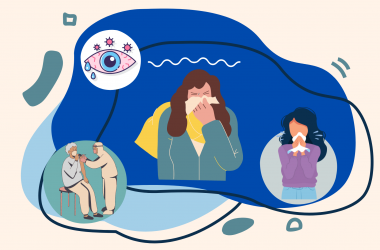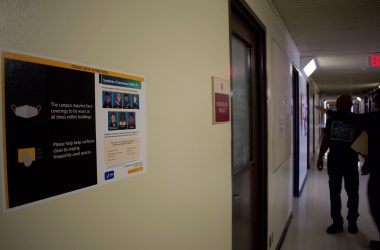Southern California has been placed under a regional lockdown to begin Sunday, Dec. 6 in line with Gov. Gavin Newsom’s stay-at-home order restricting nonessential activity as coronavirus cases continue to rise in the state.
In fear of hospitals becoming overpopulated, Newsom announced an updated order Thursday, Dec. 3 temporarily restricting all nonessential travel statewide and said that a stay-at-home measure based on region will go into effect when an area’s intensive care unit capacity dips below 15%.
The region consisting of Los Angeles, Orange, Riverside, San Diego, San Bernardino, Santa Barbara, San Luis Obispo, Imperial, Inyo, Mono and Ventura counties implemented a lockdown to begin Sunday, Dec. 6 at 11:59 p.m. as ICU capacity fell to 12.5%, according to the California Department of Public Health.
“We’re taking this to a whole other level,” Newsom said in a press conference Thursday. “This travel advisory is rather firm.”
The regional order restricts all gatherings with members of other households, limits retail businesses to 20% occupancy, restricts restaurants and bars to just takeout and delivery, allows worship and political expression only outdoors and prohibits nonessential out-of-state travel unless it is longer than the minimum quarantine period.
These restrictions are set to remain in effect for at least three weeks, according to Acting State Public Health Officer Erica S. Pan, and are to continue until the state’s four-week ICU projection indicates a capacity of at least 15%.
The San Francisco Bay Area issued the order Friday and will begin the lockdown lasting from Sunday, Dec. 6 at 10 p.m. to Jan. 4, according to Mayor London N. Breed.
Newsom said in a tweet Thursday that the first doses of a vaccine are “arriving in the next few weeks,” and Long Beach Mayor Robert Garcia confirmed that he will be implementing his local vaccine plan in the coming week, with the Long Beach Health Department responsible for local distribution.
State health officials maintained that residents of California should refrain from any travel whenever possible and emphasized that the Centers for Disease Control offered a shorter quarantine period of just 10 days, rather than the usual 14, for those without symptoms.
“We know it’s a burden, we know it’s a toll,” said Mark Ghaly, secretary of California’s Health and Human Services Agency. “The message of the day is as much as you can, stay at home and reduce your interactions.”
These stricter coronavirus restrictions come after the state saw a spike in cases during the Thanksgiving holiday and counties began to take their own precautions.
Los Angeles County first implemented an overnight stay-at-home order lasting from Nov. 21 to Dec. 21 to limit nonessential activity during the hours of 10 p.m. and 5 a.m., then instated a three-week stay-at-home order beginning Nov. 30.
Remaining in effect until Dec. 20, the three-week order encourages residents to remain in their houses as much as possible, wear face masks when outside and exercise social distancing when in public, according to Los Angeles Public Health.
“As new COVID-19 cases remain at alarming levels and the number of people hospitalized continue to increase, a temporary Los Angeles County Health Officer Order will be issued to require additional safety measures across sectors,” the statement read. “Public Health reminds everyone to stay home as much as possible and avoid seeing people you don’t live with, even if you don’t feel sick.”
LA Public Health confirmed Dec. 4 that the county has seen 8,860 new cases and 60 new deaths. LA County currently has 2,769 individuals hospitalized for COVID-19, with 23% in the ICU.
The new health order is intended to protect both county residents as well as essential and emergency workers from further exposure to the virus.
Health officials urge residents to maintain health guidelines and exercise caution when outside their households.
“Taking these simple safety precautions, in addition to washing your hands frequently, will save lives,” they said.
This story was updated on Dec. 5 at 2:23 p.m. with new information from the state.





Pingback: Southern California reaches 0% ICU capacity - Daily Forty-Niner
Pingback: Grocery workers may receive an extra ‘$160 per week’ after Long Beach City Council votes to restore ‘Hero Pay’ - Daily Forty-Niner
Pingback: Long Beach City Council moves forward with plans to provide financial relief to local businesses - Daily Forty-Niner
Pingback: Long Beach looks to assist local businesses with resiliency funds - Daily Forty-Niner
I think they should lock everyone in there homes for two weeks straight have national guard helping the people with what they need from stores leave a list outside there front door no one to leave at all then you will know who sick and not sick this stay at home order still gives people to come and go and just spreading the virus more and more we need to contain this thing it’s controlling us we need to control it